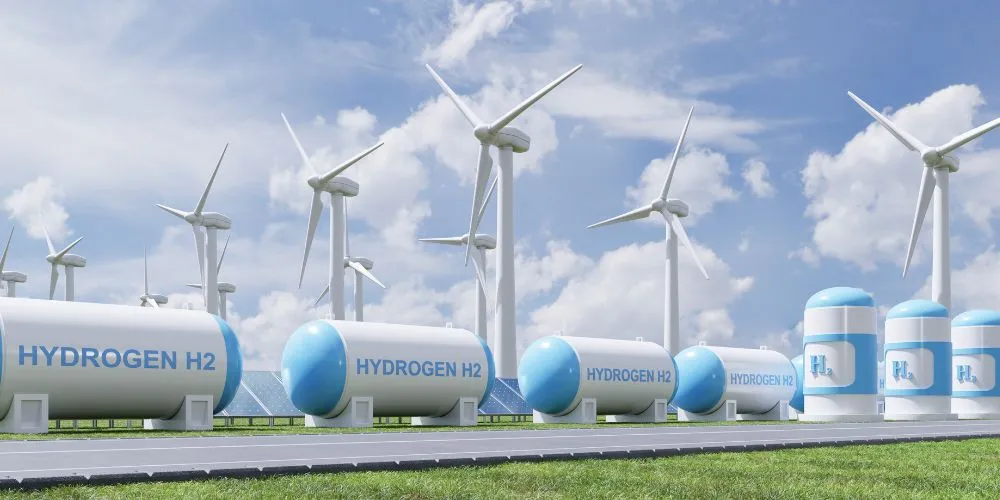Grid-scale energy storage is becoming increasingly crucial in transitioning to a sustainable energy landscape. This comprehensive exploration delves into the significance of grid-scale energy storage, its underlying technologies, applications, and its transformative impact on the reliability, efficiency, and integration of renewable energy sources into our power grids. By understanding the critical role of grid-scale energy storage, stakeholders in the energy sector can work towards building a resilient and sustainable energy infrastructure.
The Significance of Grid-Scale Energy Storage
Grid-scale energy storage is important in addressing the intermittent nature of renewable energy sources like solar and wind. Storing excess energy when production exceeds demand and releasing it during high or low production periods is vital to ensure a reliable and stable power supply.
It involves the large-scale accumulation and retrieval of electrical energy, typically utilizing advanced technologies and systems. It enables utilities to balance supply and demand on the grid, enhance grid stability, and integrate renewable energy sources seamlessly into the existing infrastructure.
Key Technologies in Grid-Scale Energy Storage
Several key technologies contribute to grid-scale energy storage, each with unique strengths and applications. These technologies include lithium-ion batteries, pumped hydro storage, compressed air energy storage, flow batteries, and emerging technologies like solid-state batteries and advanced flywheel systems.
Lithium-Ion Batteries
Lithium-ion batteries, commonly found in electric vehicles and consumer electronics, are increasingly used for grid-scale energy storage. Their high energy density, scalability, and declining costs make them a versatile and cost-effective solution for storing electricity on a large scale.
Pumped Hydro Storage
Pumped hydro storage involves using excess electricity to pump water to a higher elevation and store it in a reservoir. During periods of high demand, the stored water is released, flowing downhill through turbines to generate electricity. This well-established technology provides a reliable and efficient means of grid-scale energy storage.
Compressed Air Energy Storage (CAES)
CAES systems store energy by compressing air and storing it in underground caverns. When electricity demand is high, the compressed air is released, expanding through turbines to generate electricity. CAES provides a flexible and scalable solution for storing large amounts of energy over extended periods.
Flow Batteries
Flow batteries utilize liquid electrolytes in external tanks, allowing for easy scalability and long-duration storage. They are well-suited for applications requiring extended discharge periods, making them a promising technology for grid-scale energy storage.
Emerging Technologies
Emerging technologies such as solid-state batteries and advanced flywheel systems are gaining attention for their potential to enhance grid-scale energy storage solutions’ efficiency, safety, and longevity. These technologies address current limitations and open new possibilities for large-scale energy storage.
Applications of Grid-Scale Energy Storage
Grid-scale energy storage finds diverse applications across the energy sector, contributing to grid stability, reliability, and the efficient integration of renewable energy.
Balancing Supply and Demand
One of the primary applications of grid-scale energy storage is balancing the supply and demand of electricity on the grid. By storing excess energy during periods of low demand and releasing it when demand is high, grid operators can ensure a stable and reliable power supply.
Integration of Renewable Energy
It plays a pivotal role in integrating renewable energy sources. As solar and wind power generation can be intermittent, storage can store excess energy during peak production and release it when renewable sources are less productive.
Peak Shaving and Load Leveling
Peak shaving involves storing energy during low-demand periods and releasing it during peak demand, helping to flatten the electricity demand curve. Load leveling contributes to a more consistent electricity distribution, reducing the grid strain during peak hours.
Emergency Backup and Resilience
Grid-scale energy storage is a reliable emergency backup, ensuring a stable power supply during unexpected outages or natural disasters. It enhances the resilience of the electrical grid and minimizes disruptions to critical services.
Deferring Infrastructure Investments
Optimizing the use of existing infrastructure and minimizing the need for additional power generation facilities helps defer investments in new power plants and transmission lines. It can result in cost savings and a more efficient use of resources.
Challenges in Grid-Scale Energy Storage
Despite its numerous benefits, grid-scale energy storage faces challenges that must be addressed for widespread adoption and optimal effectiveness.
Cost Considerations
The initial costs of implementing grid-scale energy storage systems, including purchasing and installing technologies, can be substantial. While the costs are decreasing, addressing economic considerations remains crucial for wider adoption.
Technological Limitations
Current technologies have limitations, such as energy density, cycle life, and environmental impact. Overcoming these limitations needs ongoing research and development to enhance the performance and sustainability of grid-scale energy storage solutions.
Regulatory and Policy Frameworks
The lack of standardized regulatory frameworks and policies can impede the deployment of grid-scale energy storage. Clear guidelines, incentives, and streamlined approval processes are essential to creating an environment conducive to investment and implementation.
Future Trends in Grid-Scale Energy Storage
The future of grid-scale energy storage holds exciting prospects with emerging trends that promise to address current challenges and further enhance its capabilities.
Advancements in Battery Technologies
Continued battery technology advancements, including energy density, cycle life, and safety improvements, will contribute to more efficient and cost-effective grid-scale energy storage solutions.
Innovative Storage Mediums
Research into innovative storage mediums, such as next-generation flow batteries, thermal energy storage, and advanced materials for traditional batteries, is ongoing. These mediums aim to overcome existing limitations and provide new possibilities for large-scale energy storage.
Decentralized Energy Storage Networks
The development of decentralized energy storage networks, where smaller-scale storage systems are distributed throughout communities, can enhance grid resilience, reduce transmission losses, and contribute to localized energy independence.
Artificial Intelligence for Optimization
Artificial intelligence (AI) integration for real-time optimization and control of grid-scale energy storage systems is a growing trend. AI algorithms can predict demand patterns, optimize charging and discharging cycles, and enhance system efficiency.
Conclusion
It is a linchpin in transitioning to a sustainable and resilient future. Its ability to balance supply and demand, integrate renewable energy sources, and enhance grid stability positions it as a critical component of modern energy infrastructure. While challenges persist, ongoing advancements, innovative solutions, and supportive policies pave the way for a future where grid-scale energy storage is essential and ubiquitous. By investing in research, embracing technological innovations, and fostering a collaborative approach, stakeholders can unlock the full potential of grid-scale energy storage, ensuring a reliable, efficient, and sustainable energy landscape for future generations.










